The history of olive Oatman — girl with the tattooed face who has lived five years with the Indians
Categories: History | North America
By Pictolic https://pictolic.com/article/the-history-of-olive-oatman-girl-with-the-tattooed-face-who-has-lived-five-years-with-the-indians.htmlThe confrontation of European settlers with the indigenous people of the Americas lasted for almost five centuries. And with the other hand was shown a lot of animal cruelty — both white and red were not especially sentimental and very willingly was put to death as soldiers and civilians. But sometimes there were exceptions and the prisoners lived in captivity for many years, adopting an alien way of life and customs. It happened with olive Oatman, which held among the Indians as long as five years.
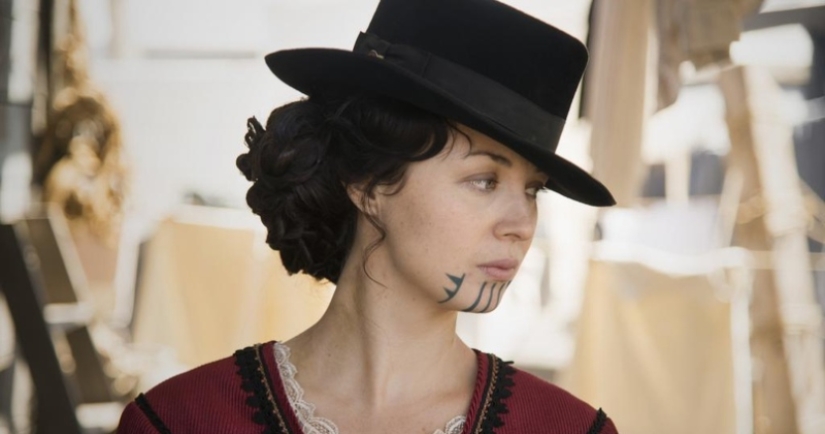
Olive Oatman was born in Illinois, USA, in 1837. The girl's parents Royce and Mary Ann Oatman was a Mormon and so olive and her six siblings were brought up in this faith of inherent rigor and piety.
A wagon of settlers-the Mormons
In 1850 the Mormon community was split, because of which about a hundred of the inhabitants, headed by the Reverend James Brewster left his native village and went to seek his fortune in California, which the preacher called the new promised land.
In the path of the Wanderers snapped, causing the majority went through a long and safe Northern route, and several families, at the head of whom was the father of olive has chosen a dangerous and short South, across a desert Arizona.
In the wilderness supporters left Atamanov, refusing to go any further and a large family of two adults and seven children went on. In the area of the Gila river to a small caravan approached a group of Indians and demanded to give food, tobacco and rifles, but Royce Oatman at gunpoint, drove out insolent visitors.
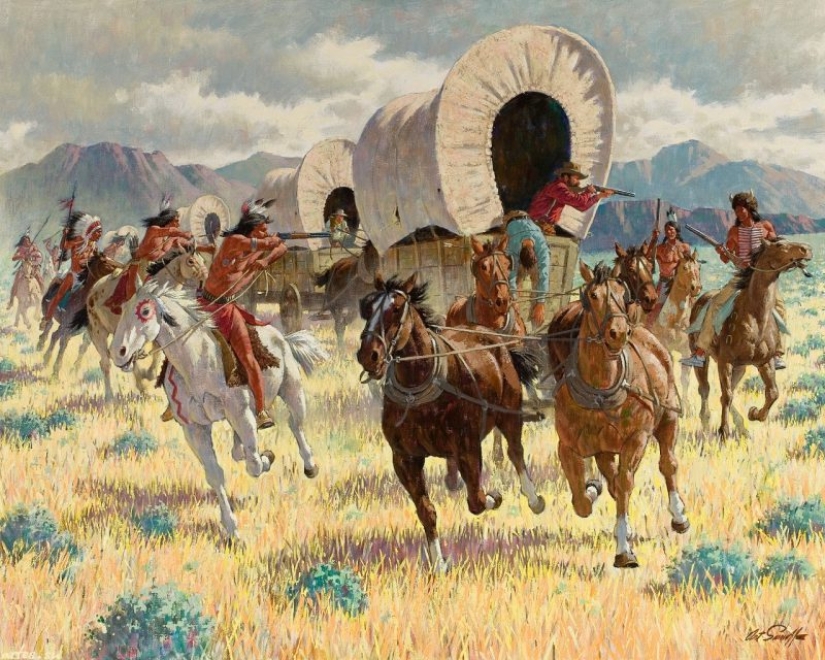
The attack of the Indians. Artist Arthur Sarnoff
The conflict ended with the fact that the Indians came back with reinforcements and killed the entire family, except three children — 14-year-old olive, 7-year-old Mary Ann and 15-year-old Lorenzo. Girls Redskins took him, but a wounded Lorenzo was left for dead among the corpses near the looted wagon.
Fortunately for the boy, he woke up and managed to get to the nearest settlement, where they received help. After recovering from his wounds, the boy with a group of armed men went in search of the surviving members of his family, but little sister was gone, along with the kidnappers, leaving no traces.
In attack all blamed the warlike Apaches, but the kidnappers turned out to be girls tribe tolaas. This baffled search teams who, not having achieved success, soon declared sisters dead and stopped the search. But the girls were alive and were not in the best conditions. In the Indian village located 100 miles from the abduction site, they were in the position of slaves, women performing different work.
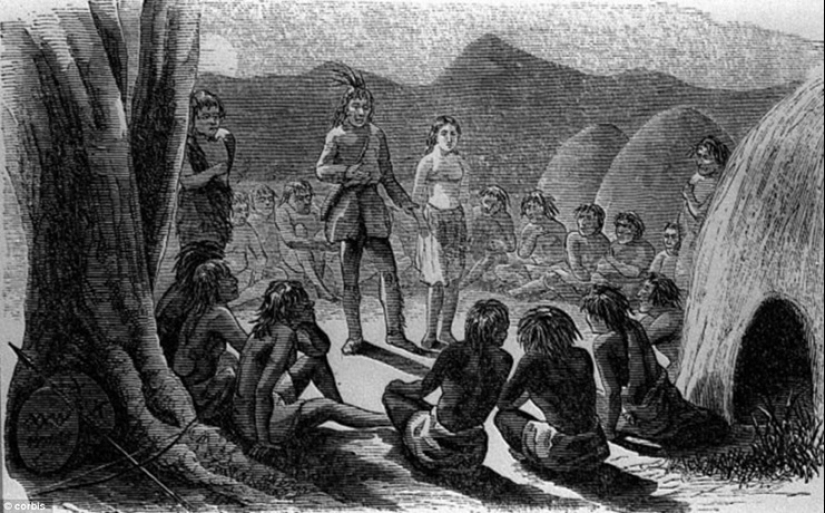
Olive Oatman among the Indians. Illustration from the book
The Indians did not stand on ceremony with young prisoners — they were forced to do hard and dirty work, were fed scraps and periodically beaten. In such distress of olive and Mary Ann spent a year. To avoid further humiliation that sooner or later would have cost the girls life, they helped the case.
Several warriors of the tribe of Mohave arrived in the village of tulkibas to trade and saw two filthy and emaciated white girls. It is difficult to say what attracted them in the Mojave these unfortunate children, and they bought them, giving the captives a bale of vegetables, some blankets and two horses.

Woman tribe Mojave. Photo of the early XX century
Mojave tribe, unlike the seedy tolaas, was at that time rich and not too aggressive, so lived sedentary. Espinola singled out white girls a plot of land as full-fledged members of the tribe and they were able to get their small farm. Like other women of the tribe, Aliv and Mary Ann did on the chins and arms traditional tattoos.
Later olive Oatman told that these signs were the hallmark of the slaves of the Mojave, but it was not so. First, these tattoos could be worn on the body, only members of the tribe, and secondly, the story given by the leader of the ground is not too fit into this legend. To confirm or to refute the words of olive after her release, there was no one, therefore, Oatman always imagined myself as the captive Mohave, feared to flee the village for fear of death.
In 1855, the olive loses his sister because of the great drought on the lands of the Mojave famine and Mary Ann dies at the age of 10 years. In that year, in the valleys of the rivers Colorado and sickly many people died and olive had miraculously avoided this fate. Later, she will remember the tribe with great gratitude, as the Indians do not let her die helping than you can.
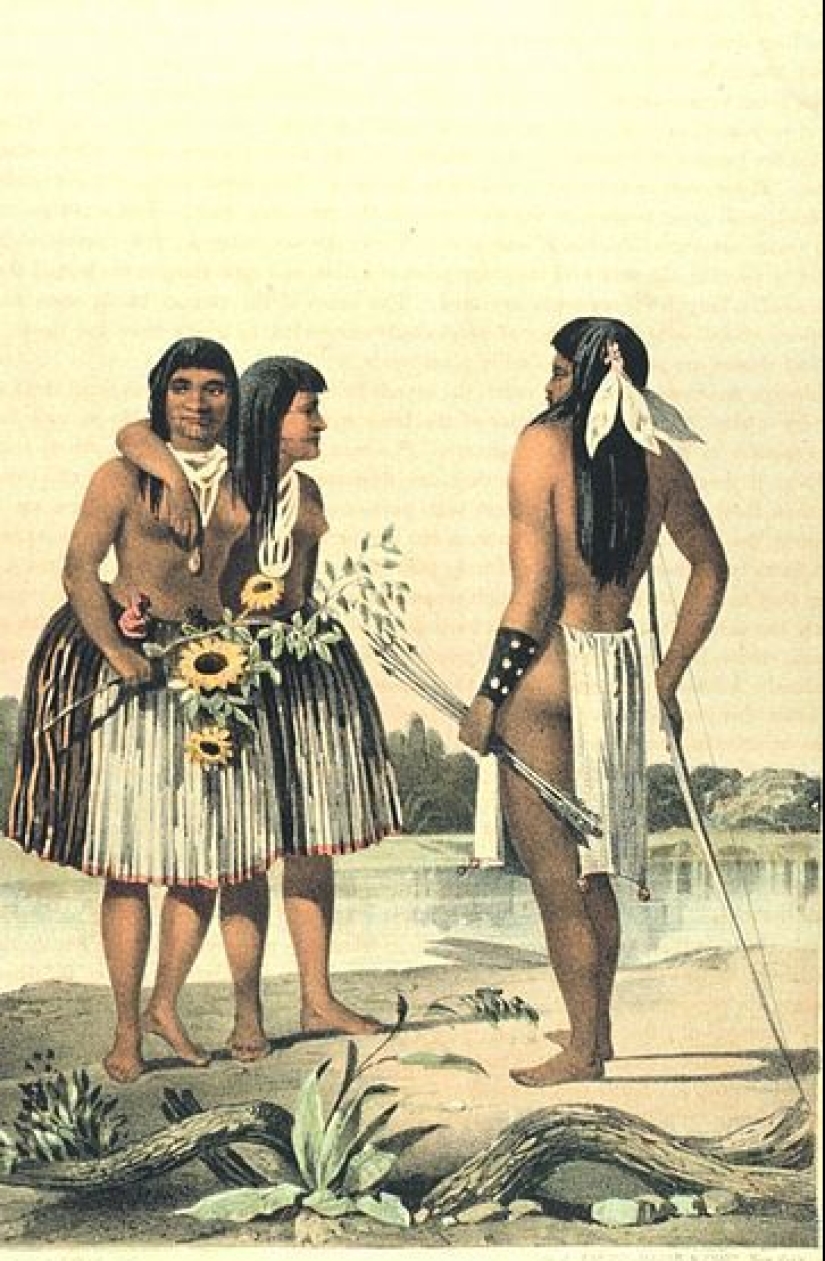
The Mojave Indians
When olive Oatman was 19 years old, in the village of Mojave, arrived a messenger from the Yuma tribe named Francisco, who is the commander of the garrison located a few days journey of the Fort gave a special assignment. In the fortress knew that the Indians keep a white girl and asked her to give.
Espanola flatly refused to discuss the results of olive and, moreover, began to deny that ever seen in your settlement girls from other people. But Francisco did not give up — he rented from the Mojave house and decided without the girl not to return. The messenger offered to buy Oatman for money or to exchange it for goods and horses, but seeing that it does not move from a dead point, passed to threats.
The Indian said that if olive will not give up, the garrison of the Fort will arrive in the village with a punitive expedition and take her by force. In the course of negotiations, in which participated Oatman, the parties agreed and the girl, together with the messenger and the convoy Mojave, went to Fort Yuma.
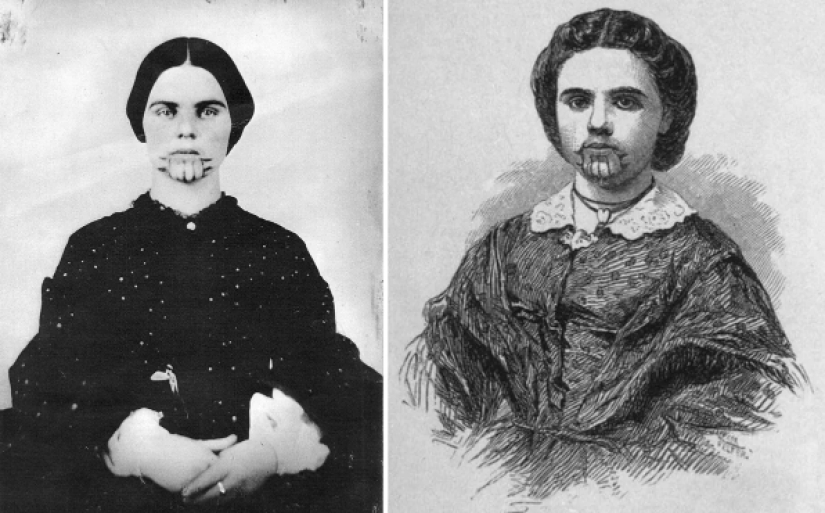
On arrival Oatman demanded that she was given the dress as according to the custom of women Mojave she was dressed only in a skirt and went with an open chest. In Forte olive met with applause and the girl was moved by this meeting. However, there is information that the former prisoner of the hardships of life among their compatriots. A childhood friend of olive, Susan Thomson, with which they continued to be friends, and remember that Oatman was sad in the Mojave due to the fact that the tribe left her husband and two children.
While the olive has always denied the marriage, the birth of children and even sexual abuse on the part of the Indians. "To the honor of these savages will be told that they never treated me offensive" — answered the girl questions about how she lived among the Indians.
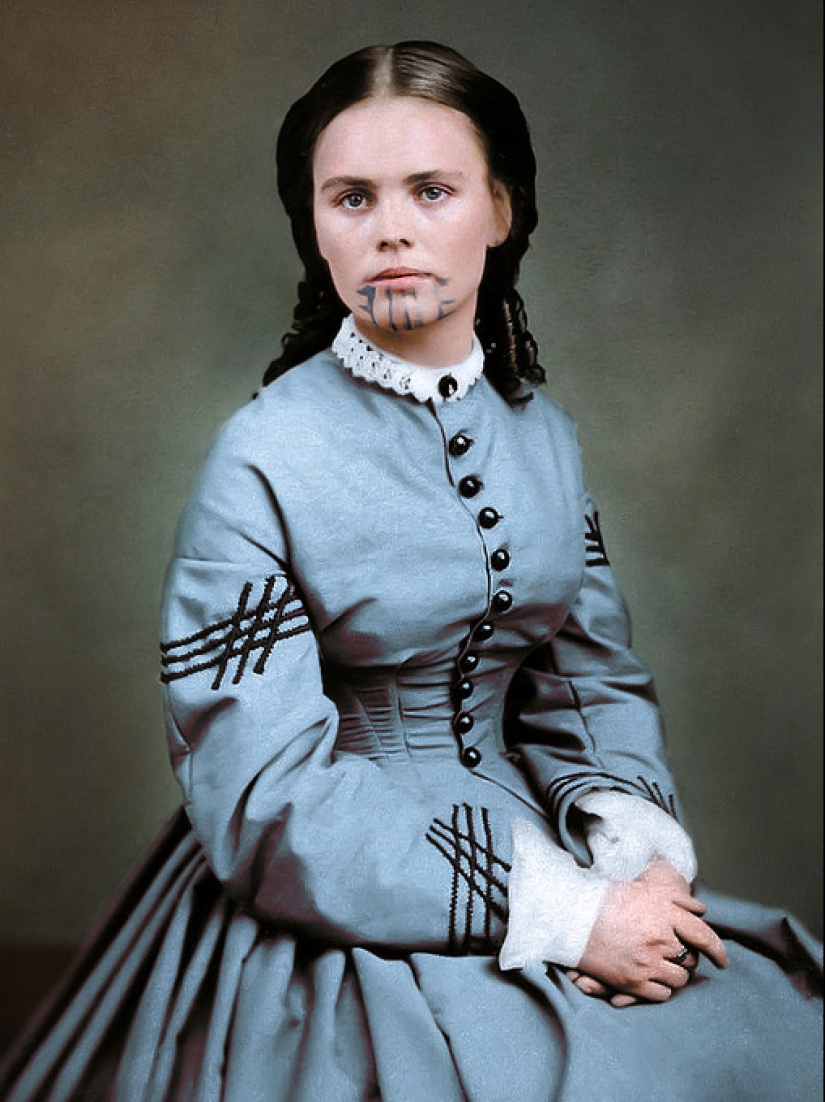
This money is olive and Lorenzo were able to enroll in University of the Pacific USA and get a good for that time education. A former captive of the Indians soon began to earn a good income by giving lectures about life among the Mojave to the students and just curious compatriots.
In 1865, olive met John B. Fairchild — wealthy merchant of cattle from Texas and soon they were married. The couple moved to Texas the city of Sherman, where he adopted a girl named Mamie. After that, life Oatman, not much happened. Olive Oatman Fairchild died of a heart attack in 1903 at the age of 65 at his home in Sherman and was buried at the city cemetery in West hill.
Keywords: American Indians | Arizona | The Mormons | Captivity | Slavery | USA | Tattoo | Fort
Post News ArticleRecent articles

At first glance, these colorful works look like ordinary paintings - but upon closer inspection, it turns out that they are made... ...

I want to somehow distract myself from the news about the pandemic and plunge into the beautiful. Here, for example, is a story ...
Related articles

Woodpeckers — amazing birds over that pretty bother mother nature. All day they are able to peck their beaks wood, exposing ...

Today, programs to simulate life on Mars are more relevant than ever. Hundreds of people in different parts of the world live in ...

While hundreds of adventurers roam the planet in search of treasure, American Mike Farmer gathers them right under your feet. It is ...

Serbian surrealist artist Dragan Ilić creates astonishing and provocative paintings that blend symbolism with eroticism, and ...